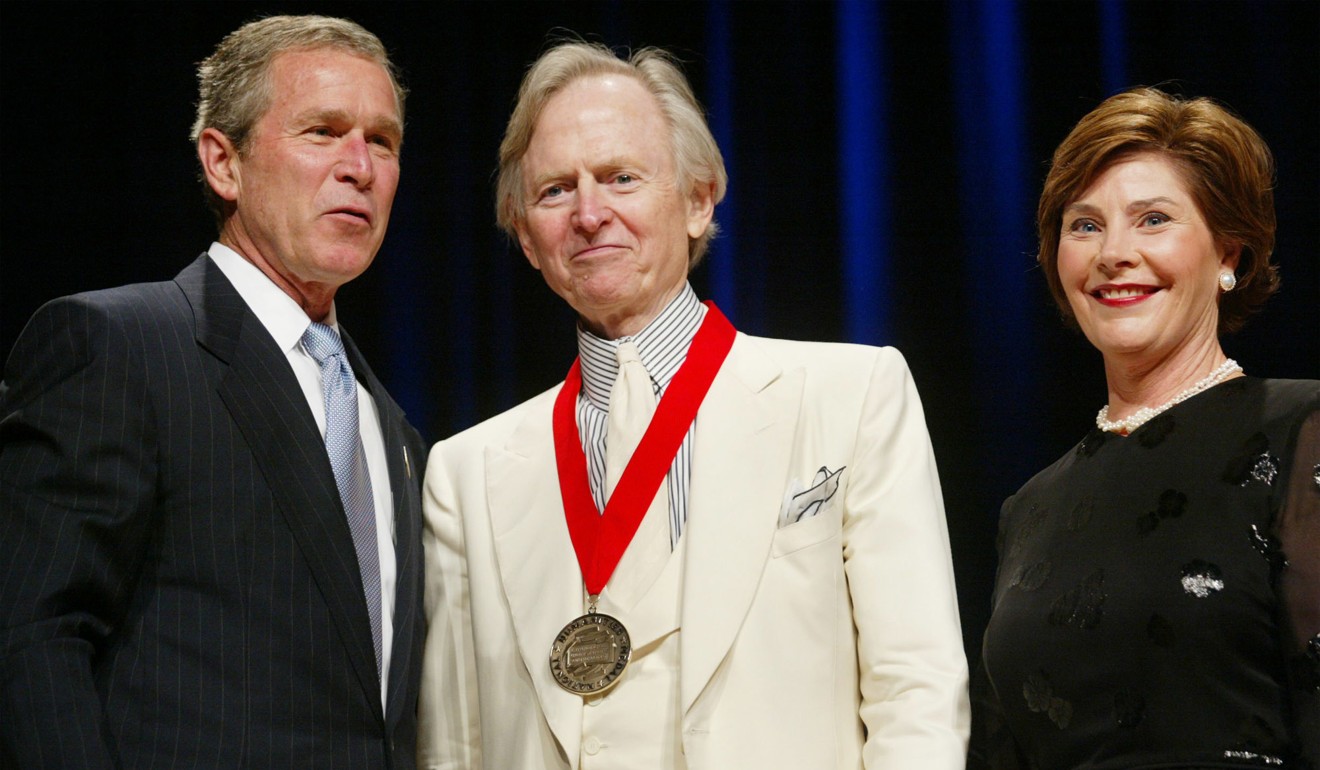
How Tom Wolfe, ‘Bonfire of the Vanities’ author who has died at 88, electrified fiction
A writer who spent the first half of his life dethroning the novel with New Journalism, then spent his final decades plotting to bring the novel back into power
No journalist ever moved to fiction with the panache of Tom Wolfe. But then no one ever moved to anything with quite the panache of Tom Wolfe.
The white-suited writer, who died Monday in New York at the age of 88, transformed the field of nonfiction, but his four giant novels were equally impossible to ignore.
Wolfe crashed into a literary scene that had grown timid, self-absorbed and, yes, dull. Brilliant young writers, he claimed, were afraid to capture the dazzling variety and absurd clashes of real life.
The wild trajectory of his own career was just the sort of unbelievable reality he craved: having spent the first half of his life dethroning the novel with New Journalism, he spent his final decades plotting to bring the novel back into power.

Enough with the navel-gazing of contemporary fiction! If you want to write a novel, he told prospective writers, get out of your room and get out on the street.
The First Law of Wolfe Fiction was that a great novel is predicated on great reporting, which, not coincidentally, was something Tom Wolfe was preeminently equipped to do.
And so he approached his novel about New York in the 1980s just as he had approached The Right Stuff, his book about test pilots in the 1970s: he literally submerged himself in his material, riding the subways in the Bronx.
One night he ran into a nervous broker who had started dressing in a shabby disguise to avoid the attention of thugs shaking down well-heeled passengers for cash. The Bonfire of Vanities was born. The book appeared in October of 1987, a week before the New York stock market dropped 22 per cent.
Tom Wolfe tries to throw Noam Chomsky on the bonfire
But as much as Wolfe seemed to anticipate our era’s melodrama, he believed that the future of the novel lay in its Victorian past, especially the bear-hug embrace of 19th-century masters like Thackeray, Zola and Dickens. Those writers understood the special power of fiction to contain a city’s vastness, and Wolfe was convinced that their vision could be awakened again.
In Harper’s magazine in 1989, he offered up his literary manifesto: “To me the idea of writing a novel about this astonishing metropolis, a big novel, cramming as much of New York City between covers as you could, was the most tempting, the most challenging, and the most obvious idea an American writer could possibly have.”

As if to drive that point home, Wolfe began work on another novel, even bigger, even better, even more Dickensian in its scope and ambition. A Man in Full appeared more than decade later, in 1998, and made a strong claim to be a Great American Novel.
Set in Atlanta, A Man in Full demonstrated Wolfe’s boundless capacity to move up and down the class ladder, capturing the lives of the powerful and the dispossessed with equal confidence. (It also contains the most audacious sex scene in American literature – albeit between two horses.)
The title may have nominally referred to Wolfe’s protagonist, a outlandish real estate developer, but “A Man in Full” was an equally apt description of Wolfe himself, who could not be contained.
Although he was a finalist for a National Book Award that year, he graciously declined to attend the prize ceremony because, he said, he had a previous engagement in Atlanta. One of those quiet, introspective novels – Alice McDermott’s Charming Billy – beat out A Man in Full in a surprise upset, but as his publisher Robert Straus growled the next day: “Tom doesn’t need that prize!”
At his best, Wolfe wrenched American novels back into action. He pumped adrenaline into the veins of US fiction. He reminded authors and publishers that readers crave great stories, tales commensurate to the crazy, unbounded chaos they’re living through.
Somewhere, surely, right now there’s a young author, encouraged by Wolfe’s advice, toiling away on the next great American novel about the Trump administration.
Wolfe, already clad in white, would look down and smile at that.

